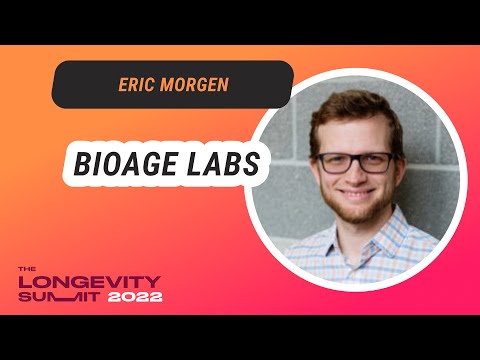And did it do better than the already otc available, cheap and save HMB…
Yes, Exactly; that’s a very good point
If a lab in India or China starts to crank up production of bgr-105 for sale as a research chemical, we might get thousands if test subjects in a few years. I am referring to bodybuilders and gym bros who are often taking research chemicals like LGE-4033. Of course the data from such unsupervised use is nearly worthless, but horrible side effects like liver toxicity or other surprise findings could be revealed. Between the gym bros, trans transitioners, and longevity biohackers, we have a lot of people trying to alter human physiology. There is much to be learned from all this self experimentation, but situation is so sloppy that a lot of wrong lessons may be learned first.
Yes, and not losing muscle seems a whole different kettle of fish than gaining muscle through exercise. We all seem to have a rough set point for musculature, and maybe this drug just makes it easy to maintain that, or maybe it makes it easier to exceed that set point…we just don’t know.
I’ve been searching a big on Apelin to learn more. Here is one quote from the book “Defying Aging”
“Another important myokine is called apelin. Of course, its levels decline with age but are boosted by exercise. Its effects read like a fountain of youth: stimulating production of new mitochondria, facilitating protein synthesis, and helping muscle stem cells to function.14
Our skeletal muscles suck up a large proportion of the sugar circulating in the blood. As we lose muscle, blood sugar levels can rise contributing to an age-related risk for type 2 diabetes. Conversely, exercise stabilizes blood sugar levels.1”
From the sounds of it, it will be competitive with drugs being developed that target Irisin: Irisin Ameliorates Age-associated Sarcopenia and Metabolic Dysfunction
Effect of endurance training on skeletal muscle myokine expression in obese men: identification of apelin as a novel myokine
Apelin_ijo.2013.158.pdf (1.2 MB)
I have a large amount of this product setting on my shelf. As with most butyrate products, they are quite nasty. I currently take potassium BHB because is highly hygroscopic and dissolves instantly in water and does not taste too bad. I take it like a shot of tequila with a water chaser.
The HYDROXYMETHYLBUTYRATE (HMB) is much nastier and doesn’t dissolve in water as well.
Does anyone have a favorite method of taking the nastier butyrate salts?
When I first read the study I thought they were saying there was a 100% gain in muscle, I.e. doubled in size.
Interesting stuff. But of course there have to be some negatives to apelin. It appears to be able to stimulate growth of tumors and even is said to be a marker for diagnosis of tumors.
It is suggested that apelin positively affects the treatment of non-cancerous diseases and may be considered as a therapeutic drug in many illnesses. However, in cancers, apelin appears as a tumour growth stimulator, and its suggested role is as a marker in the diagnosis of tumour cancers in tissues. In summary, apelin has certain therapeutic abilities and can be useful in the treatment of, e.g., insulin resistance, hypertension, etc., but it also can sometimes serve as a negative factor.
Full Paper (Open access)
I see many research studies where drugs and supplements (e.g. NMN, etc.) seem to be helpful to our health when we are younger and disease free, but they seem to be helpful to the cancers (growth), and other disease conditions when people are older (if you have cancer, tumors, etc.).
I think this may be an argument for starting these drugs earlier in life (when the risk of you having undiagnosed cancer is lower). And it seems to suggest extra caution is in order if you are older and may have undiagnosed tumors and cancer.
I would say some of these interventions (the endogenously produced one like NMN) are more helpful when you are older not younger, they’re just ironically also more risky when older because the chances of cancer are higher. It’s possible that the body is deliberately downregulating production of these compounds with age in part to reduce the risk of cancer.
My guess is that it has a lot to do with loss of immune function. The majority of cancers begin to appear during middle age. Same goes for infections. We slowly begin lose the capacity to deal with any negative consequence that our younger bodies could cope with. Homeostasis becomes harder and harder to maintain.
Exactly. I think declining immunity is the main reason cancers become more common with age.
A recent British show on longevity research in California, including some coverage of the BioAge Apelin drug:
Interview with BioAge VP:
and here:
Here is Eric Morgan’s talk from last December’s Longevity Summit (slides of which were conveyd in the first post of this thread:
This looks so promising. It’s just frustrating that biotech companies have to work around the fact that aging isn’t considered a disease. It just slows down the process of getting these drugs to market. Crossing fingers for this one. If it fulfills its promise it could be a blockbuster. Definitely worth looking out for the IPO if they go public.
Longevity is going mainstream… BioAge just announced a $170 Million in Series D funding…
BioAge Announces $170 Million Oversubscribed Series D Financing to Accelerate Development of Obesity and Metabolic Disease Therapeutics
-
Funding to advance Phase 2 clinical trials of azelaprag, an apelin receptor (APJ) agonist, in combination with Lilly’s Zepbound (tirzepatide) and therapeutic pipeline
-
Azelaprag improves metabolic and muscle function and has potential as an oral drug to significantly increase weight loss and improve body composition in patients on GLP-1/incretin therapy
-
James Healy, M.D., Ph.D., Managing Partner at Sofinnova Investments appointed as Chairman of the Board; Patrick Enright of Longitude Capital joins the Board of Directors of BioAge



